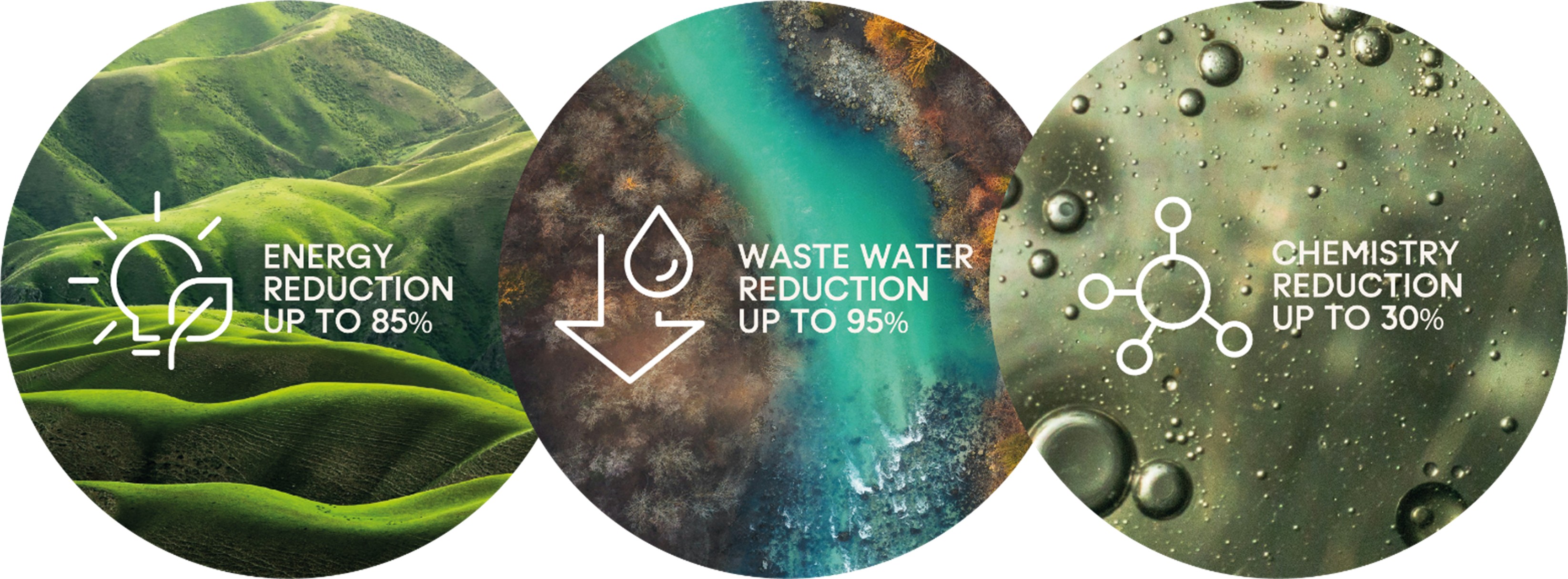 As part of World Health Day this week, we recognise the crucial connection between environmental sustainability, global health, and textile dyeing. The textile industry, particularly traditional dyeing processes, has long been a significant contributor to environmental degradation. However, advancements in clean-tech solutions, such as digital textile dyeing, offer promising pathways to mitigate these impacts and promote a healthier planet. Here we explore the impact of traditional textile dyeing on the environment and compare it to Innovative Textile Solutions on World Health Day.
As part of World Health Day this week, we recognise the crucial connection between environmental sustainability, global health, and textile dyeing. The textile industry, particularly traditional dyeing processes, has long been a significant contributor to environmental degradation. However, advancements in clean-tech solutions, such as digital textile dyeing, offer promising pathways to mitigate these impacts and promote a healthier planet. Here we explore the impact of traditional textile dyeing on the environment and compare it to Innovative Textile Solutions on World Health Day.
The Environmental Impact Of Traditional Textile Dyeing vs Digital Textile Dyeing
Conventional dyeing methods, including jet exhaust dyeing and dye baths, are notorious for their excessive consumption of water and energy, as well as their heavy reliance on chemicals. These processes not only deplete vital resources but also contribute substantially to pollution and greenhouse gas emissions, adding to The Environmental Impact of Traditional Textile Dyeing.
Water Consumption vs Water Efficiency
Being wet processes, traditional textile dyeing’s water consumption can reach up to 150 litres of water per kilogram of fabric. This immense water usage strains local water supplies and results in the discharge of wastewater ladened with dyes and chemicals into ecosystems.
While many brands and textile manufacturers are reducing their water consumption, the industry is gradually shifting to improve water efficiency. Innovations such as dry processing offer a more sustainable alterative. Switching to Alchemie’s dry process, digital textile dyeing allows you to reduce water usage by up to 95%, compared to conventional jet exhaust dyeing. This drastic reduction alleviates pressure on water resources and minimises wastewater production through removing the need for multiple wash cycles and improves production speeds.
Energy Consumption vs Energy Savings
Processes like jet exhaust dyeing require heating water to temperatures as high as 135 degrees Celsius, often powered by burning fossil fuels, demanding significant energy consumption. This contributes to the textile industry's substantial carbon footprint, accounting for up to 10% of global greenhouse gas emissions.
Traditional textile dyeing’s high energy consumption for dyeing, washing, and drying is well-known. Yet innovative textile solutions such as clean-tech machines are significantly lowering associated carbon emissions. For you to benefit from energy savings, our technologies can cut energy consumption by up to 85%, through eliminating the need to heat large volumes of water. Our Endeavour™ solution does just that as a single roll-to-roll production line without needing post-dyeing treatment stages.
Chemical Usage vs Reduced Chemistry
Within conventional textile dyeing, the application of dyes and finishing agents involves numerous chemicals, many of which are toxic. Inefficient dye uptake leads to large quantities of these substances being released into wastewater, allowing chemical usage to pollute waterways and pose serious risks to aquatic life and human health.
Considering the high chemical output with traditional textile dyeing, you, brands, and textile manufacturers are paying for additional post-dyeing treatment costs. To save you additional costs and reduce your chemistry usage, our digitally precise dye application enhances dye uptake efficiency, resulting in reduced chemistry by up to 30% and a substantial decrease in environmental contamination.
Embracing Digital Textile Dyeing As The Sustainable Alternative
Innovative textile solutions, such as digital textile dyeing, present a transformative effect on the environmental challenges posed by traditional textile dyeing methods. By embracing digital textile dyeing as the sustainable alternative, you can contribute to revolutionising the industry through clean-tech solutions.
Our small-scale (Discovery) and full-scale production (Endeavour™) systems offer medical-grade quality through high precision nozzles ensuring exceptional colour accuracy. Both innovative textile solutions give you flexible batch processing, while maintaining high consistency, high-quality dyeing for any production size.
Advancing Sustainability For Global Health
Having compared traditional textile dyeing and innovative textile solutions, such as dry processing digital textile dyeing, we can establish several benefits that are advancing sustainability for global health.
- Cleaner Waterways: Reduced wastewater discharge leads to healthier aquatic ecosystems, ensuring safer water sources for communities and industries alike.
- Improved Air Quality: Lower energy consumption translates to fewer emissions from fossil fuels, contributing to cleaner air and reducing respiratory health risks.
- Safer Work Environments: Minimising exposure to hazardous chemicals protects workers in the textile industry, promoting occupational health and safety.
Improving World Health Through Digital Textile Dyeing
This World Health Day, the importance of transitioning from traditional textile dyeing methods to sustainable clean-tech alternatives, like digital textile dyeing, has never been clearer. Embracing innovative textile solutions is essential for reducing water and energy consumption, minimising chemical use, and fostering a healthier planet for future generations. Brands and textile manufacturers, like you, across the textile industry are investing in and adopting these sustainable solutions, balancing environmental responsibility with operational efficiency, all while improving world health through digital textile dyeing.
Curious to learn more about our sustainable dyeing solutions, then contact us at enquiries@alchemietechnology.com.
